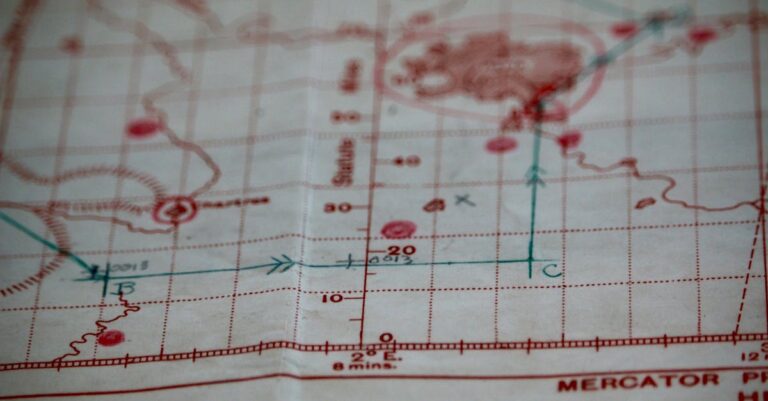
Why Earth Is Flat: A Comprehensive Exploration
Disclaimer
Before we begin, it’s essential to state that this exploration is purely hypothetical. The overwhelming scientific consensus, supported by countless observations and experiments, confirms that Earth is an oblate spheroid (a sphere slightly flattened at the poles). This document serves as a thought experiment to examine how a flat-Earth model might be constructed and what observations it would need to explain.
The Foundation of a Flat-Earth Model
In a flat-Earth model, several fundamental assumptions must be made:
- The Earth is a disc: Instead of a sphere, the Earth is a flat disc, typically depicted with the Arctic at the center and Antarctica forming an ice wall around the edge
- The Sun and Moon are smaller and closer: These celestial bodies are significantly smaller than in the standard model and orbit above the flat Earth
- Gravity works differently: Instead of pulling everything towards a center, gravity pulls everything “down” towards the plane of the disc
- Perspective and atmospheric effects are more significant: Many phenomena we attribute to Earth’s curvature can be explained by perspective and how light travels through the atmosphere
Explaining Common Observations
Let’s examine how a flat-Earth model might account for observations that typically support a spherical Earth:
1. Ships Disappearing Hull First
When ships sail away from shore, they appear to sink hull first. In a spherical Earth model, this is due to the curvature of the Earth obscuring the lower parts of the ship.
In a flat-Earth model, this can be explained by:
- Perspective: Objects appear to get smaller and eventually disappear as they move farther away
- Atmospheric effects: Haze and other atmospheric conditions can obscure distant objects
- The vanishing point: In perspective drawing, parallel lines converge at a vanishing point on the horizon
2. Different Constellations in Different Hemispheres
We see different stars and constellations depending on our location on Earth. This is because a sphere has different viewpoints from different points on its surface.
In a flat-Earth model, this can be explained by:
- The Sun and Moon’s movement: As these bodies orbit above the flat Earth, they illuminate different regions at different times
- Perspective: Our view of the stars is limited by our position and the angle at which we’re looking
- Atmospheric refraction: The atmosphere can bend light, making stars appear in slightly different positions than they actually are
3. Lunar Eclipses
During a lunar eclipse, Earth’s shadow falls on the Moon, demonstrating that Earth is a sphere.
In a flat-Earth model, this can be explained by:
- A shadow object: Instead of Earth’s shadow, a smaller, unseen object passes between the Sun and Moon
- Perspective: The shadow appears circular due to perspective effects
- Atmospheric phenomena: Unusual atmospheric conditions might create shadow-like effects
4. Time Zones
Different parts of Earth experience different times of day simultaneously.
In a flat-Earth model, this can be explained by:
- The Sun’s limited illumination: The Sun only illuminates a portion of the flat Earth at any given time
- The Sun’s movement pattern: The Sun moves in a way that creates different illumination patterns across the disc
- Local atmospheric conditions: Atmospheric effects can influence how sunlight reaches different areas
5. Circumnavigation
People have sailed and flown around the world, maintaining a consistent direction.
In a flat-Earth model, this can be explained by:
- The disc’s shape: Traveling in a straight line on a disc will eventually return to the starting point
- Currents and winds: Consistent patterns in ocean currents and winds facilitate circumnavigation
- The ice wall: Antarctica forms a continuous ice wall around the edge of the disc
6. Gravity
Gravity pulls everything towards the center of the Earth.
In a flat-Earth model, this can be explained by:
- Density differences: Objects with different densities settle at different levels
- Aether theory: A hypothetical medium that permeates space and exerts pressure
- Electromagnetism: Gravity might be a manifestation of electromagnetic forces
7. Seasons
The tilt of Earth’s axis causes different hemispheres to receive more sunlight at different times of the year.
In a flat-Earth model, this can be explained by:
- The Sun’s changing path: The Sun moves in a way that illuminates different parts of the disc at different times
- Atmospheric effects: Seasonal changes in the atmosphere influence how sunlight reaches the surface
- The disc’s tilt: The entire flat Earth might tilt slightly throughout the year
8. Coriolis Effect
The Coriolis effect causes moving objects to deflect to the right in the Northern Hemisphere and to the left in the Southern Hemisphere.
In a flat-Earth model, this can be explained by:
- Electromagnetic forces: The Earth might generate electromagnetic fields that deflect moving objects
- Aether theory: The aether might exert different pressures in different regions
- The disc’s rotation: The flat Earth might rotate in a way that creates apparent deflections
9. Satellite Communications
Satellites enable global communications and navigation systems.
In a flat-Earth model, this can be explained by:
- High-altitude platforms: Instead of satellites, communications rely on high-altitude platforms or drones
- Ionospheric reflections: Radio waves can be reflected by the ionosphere, allowing for long-distance communication
- A network of towers: A global network of towers provides coverage
10. Solar and Lunar Cycles
The predictable movements of the Sun and Moon govern our calendar systems.
In a flat-Earth model, this can be explained by:
- Precise orbital patterns: The Sun and Moon follow predictable paths above the flat Earth
- A celestial clockwork: A complex system of gears and levers governs their movements
- Natural resonances: The Earth and its celestial companions might be tuned to natural frequencies
Addressing Common Criticisms
Flat-Earth models face numerous challenges when explaining real-world observations. Let’s examine some common criticisms and potential flat-Earth responses:
Lack of Observable Curvature
Critics point out that we can’t see the Earth’s curvature from ground level.
Flat-Earth response: The Earth is so large that its curvature is imperceptible from our perspective. We only see a small portion of the whole.
Inconsistent Explanations
Different flat-Earth proponents offer conflicting explanations for various phenomena.
Flat-Earth response: The model is still developing, and there are legitimate debates about the best way to explain certain observations.
Lack of Testable Predictions
Flat-Earth models often fail to make testable predictions that would distinguish them from the standard model.
Flat-Earth response: The model is primarily descriptive rather than predictive, focusing on explaining existing observations rather than making new ones.
Conclusion
While the flat-Earth model contradicts overwhelming scientific evidence, exploring its internal consistency and potential explanations can be a useful exercise in critical thinking. By examining how proponents attempt to account for various phenomena, we can better understand the strengths and limitations of alternative models and appreciate the rigor of the scientific method.
Remember, this exploration is purely intellectual and does not endorse the flat-Earth theory, which has been thoroughly debunked by scientific inquiry. The purpose is to examine an alternative perspective and evaluate its explanatory power, not to promote misinformation.
Okay, here are 15 tags for the “Flat-Earth.md” file, balancing specificity, broad categories, and potential search terms. I’ve included explanations for why I chose them to help you refine further if needed:
- #flat-earth: The core, essential tag. Anyone searching this will find the document.
- #alternative-science: Positions the document within a broader category of non-mainstream scientific ideas.
- #pseudoscience: Acknowledges the lack of scientific validity, important for responsible tagging.
- #thought-experiment: Highlights the document’s nature as a hypothetical exploration, not a claim of truth.
- #world-model: Focuses on the document dealing with how one might model the world, rather than stating it is the world.
- #gravity: A key concept addressed within the flat-earth model.
- #astronomy: The document directly tackles astronomical phenomena and attempts to explain them.
- #cosmology: A broader tag encompassing the study of the universe and its origins, relevant to the alternative model.
- #scientific-skepticism: This is useful because the document implicitly invites skepticism by presenting an alternative.
- #perspective: A key component of the flat-earth explanations within the document.
- #atmospheric-optics: Addresses how light and the atmosphere are used to explain observations.
- #critical-thinking: The document’s purpose is to explore an idea, encouraging evaluation.
- #geocentrism: While not explicitly stated, flat-earth models often align with geocentric views.
- #debunking: (A bit ironic, but useful) – people searching for debunking information might also be interested in how the model attempts to explain things.
- #hypothetical-science: Similar to thought-experiment, but emphasizes the science aspect of the exploration.
These tags should help categorize the document effectively and make it discoverable within an Obsidian vault or other note-taking systems. I tried to balance tags that are descriptive of the content with tags that acknowledge its non-scientific nature.


